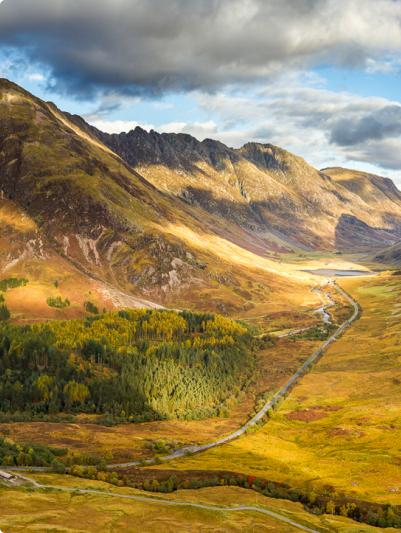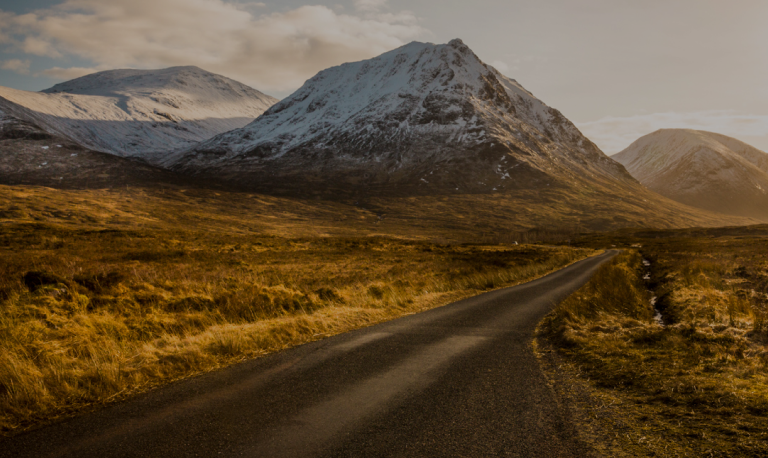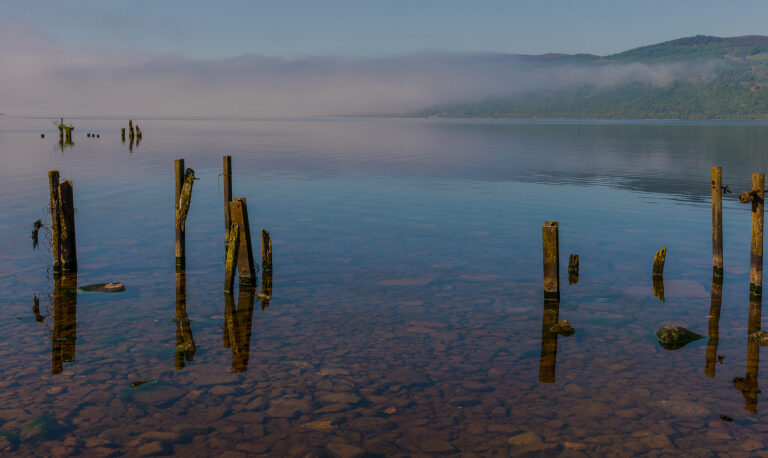9 Most Beautiful Places in England’s Lake District
England’s Lake District is renowned as one of the most stunning places in the world. With over 16 million visitors per year, it packs a huge amount of awe-inspiring sights into almost one thousand square miles of spectacular scenery.
From sparkling lakes to quaint villages to an unending landscape of craggy fells, the Lake District has magnificent sights in every direction. With so much on offer, it can be tricky to choose where to go.
To inspire your next road trip, we’ve narrowed it down to our nine favourite beautiful places to visit …
View this post on Instagram
Buttermere
Beautiful Buttermere might be one of the Lake District’s smallest lakes, but is a firm favourite amongst visitors. It’s easy to see why, with towering pines looming above the shore and tranquil, deep-blue waters.
Only one single-track road leads to Buttermere, meaning it’s more secluded and has remained safe from over-development, with only a handful of hotels and pubs in the village.
Photographers are spoiled for choice here. Some favour the woody banks and others prefer to capture the reflective lake nestled against the dramatic fells; Fleetwith Pike and Great Gable. A circular walk around Buttermere is 4.5 miles and offers some of the best scenery in the Lake District for the least amount of effort.
View this post on Instagram
Crummock Water
We can’t mention Buttermere without including its twin; Crummock Water. The two were once a single post-glacial lake, however, materials shifted over time from the fells to form a central stretch of fertile farmland between the two.
What makes Crummock Water so special is the incredible vistas of the breathtaking mountains that surround this beautiful valley. For those who dare, the best views can be seen by submerging yourself in the crystal clear waters and enjoying a 360-degree panoramic view.
Crummock is a great place for swimming, as the southern shore has a gently-sloping pebble beach. Limited parking means that it’s not uncommon to enjoy the magic of this lake in a tranquil setting.
View this post on Instagram
Haystacks
Few people could talk about the Lake District with such authority as the legendary fellwalker, Alfred Wainwright. He adored the area and dedicated his life to exploring and mapping the Lakes.
His favourite place was on top of Haystacks, which provides sweeping views of both Buttermere, Crummock and the surrounding fells. He loved it so much that this is the very spot where he requested to have his ashes scattered.
Many people complete the 597m climb today and are rewarded with breathtaking views of hidden lakes and stunning rock formations.
View this post on Instagram
Wastwater & The Wasdale Valley
Moving towards the west of the Lake District sits Wastwater – England’s deepest lake at 260 feet. It also lies at the foot of England’s highest mountain; Scafell Pike.
Much like the north-western lakes, Wastwater can only be accessed by a single-track road, making it a more peaceful place to soak up the scenery.
The view over Wastwater’s east shore is its most awe-inspiring, with Great Gable, Kirk Fell and Lingmell providing a dramatic backdrop over the serene waters. This spot has been voted ‘Britain’s favourite view’ and is so well-loved that it makes up the logo for the Lake District’s official branding.
View this post on Instagram
St Herbert’s Island on Derwentwater
Just a ten-minute walk from the bustling market town of Keswick lies Derwentwater. What makes this lake so beautiful is its islands which appear like mini floating forests. The three most famous are Lord’s Island, Derwent Island and St Herbert’s Island.
Lord’s Island was home to the Earl of Derwentwater, and the ruins of his abode are still visible in the undergrowth.
Derwent Island is the only one with a property still on it, which is now under the management of the National Trust. It’s open to the public several days a year, and visitors are encouraged to canoe there as the water levels change so frequently.
However, the most beautiful of the islands, and the one most sought-out by photographers, is St Herbert’s Island. It lies in the middle of the lake, and at five acres is the largest island. It took its name from St Herbert, a 7th-century hermit who was responsible for bringing Christianity to the area. St Herbert took up residence on the island and the remains of his cell can still be seen. It was also the inspiration for Beatrix Potter’s ‘Owl Island’.
Boats are currently allowed to land on the island to explore and can be hired from Keswick Launch Co.
You could also hike the 10-mile loop around the lake and witness the islands from different settings.
View this post on Instagram
Galleny Force Waterfall & Fairy Glen
You’ll find Galleny Force Waterfall in the heart of the Lake District on Stonethwaite Beck. It’s a spot where several classic English walking trails meet – the Cumbria Way, Coast to Coast and the Tour of the Lake District.
Galleny Force is a series of little waterfalls with several turquoise and crystal clear rock pools forming at their base. The area has a mystic quality, and is affectionately known as ‘Fairy Glen’. This is a great place to take a picnic and spend all day immersed in the magical scenery.
There are two ways to get to Galleny Force Waterfall. You can take a gentle 1-mile walk from Stonethwaite, or a 4-mile walk from Rosthwaite and enjoy the valley scenery.
View this post on Instagram
Castlerigg Stone Circle
Whilst the Lake District is well known for its striking natural scenery, there are several man-made sights that add to its charm.
Nestled on a plateau in the Thirlmere Valley sits Castlerigg Stone Circle. The site is 30 meters wide and consists of 38 stones.
Whilst the UK is home to many stone circles, perhaps none can claim such a beautiful location. Castlerigg is set on a sweeping plain against some of the Lake Districts finest peaks; Helvellyn and High Seat.
The stones were assembled in the Neolithic period and are one of the earliest examples of such practices in Britain. Unlike other such sites, they were not assembled for burial purposes, and we still don’t know exactly why it was built – although possible uses include trade, meetings, rituals, religion or astrology.
The mystery that still surrounds Castlerigg Stone Circle makes it a magical place to visit!
View this post on Instagram
Grasmere Village
When people picture a quaint English village, what they have in mind probably looks a lot like Grasmere. It’s an idyllic part of the country, with stone and slate cottages and a river running through it.
Grasmere is not only beautiful but is a place of huge literary significance. William and Dorothy Wordsworth lived in various cottages around Grasmere between 1799 and 1813. Most famously they inhabited Dove Cottage, which has been restored to look as it did in Wordsworth’s day. Many other famous poets were guests, including Walter Scott and Samuel Taylor Coleridge.
Wordsworth firmly believed the Lake District to be the most beautiful place on earth, and his walks there inspired some of his most famous works, such as ‘The Daffodil’.
Today, Grasmere is a busy tourism hub. Avoid visiting during peak summer for a better chance of enjoying its quaint charm the way Wordsworth did.
View this post on Instagram
Hawkshead Village
Last, but by no means least, is pretty Hawkshead in the southern lakes. This was a prominent village in the Norse times and a visit here is like stepping back in time.
The whitewashed houses, cobbled alleys and traditional shops feel as though they belong to a different century altogether. Hawkshead is also a traffic-free zone, so it’s not only beautiful but also a peaceful place to visit.
This is a perfect place to have a wander and enjoy some of their local delicacies, such as Hawkshead Relish, The Chocolate Factory, or Hawkshead Brewery.
View this post on Instagram
Ready to visit the Lake District?
Please don’t hesitate to get in touch with an Absolute Escapes travel specialist to plan your dream escape to the Lake District.
Our Highlights of The Lake District self-drive holiday takes in many of these spectacular locations, so why not experience them on an unforgettable road trip?
Lottie Smart


